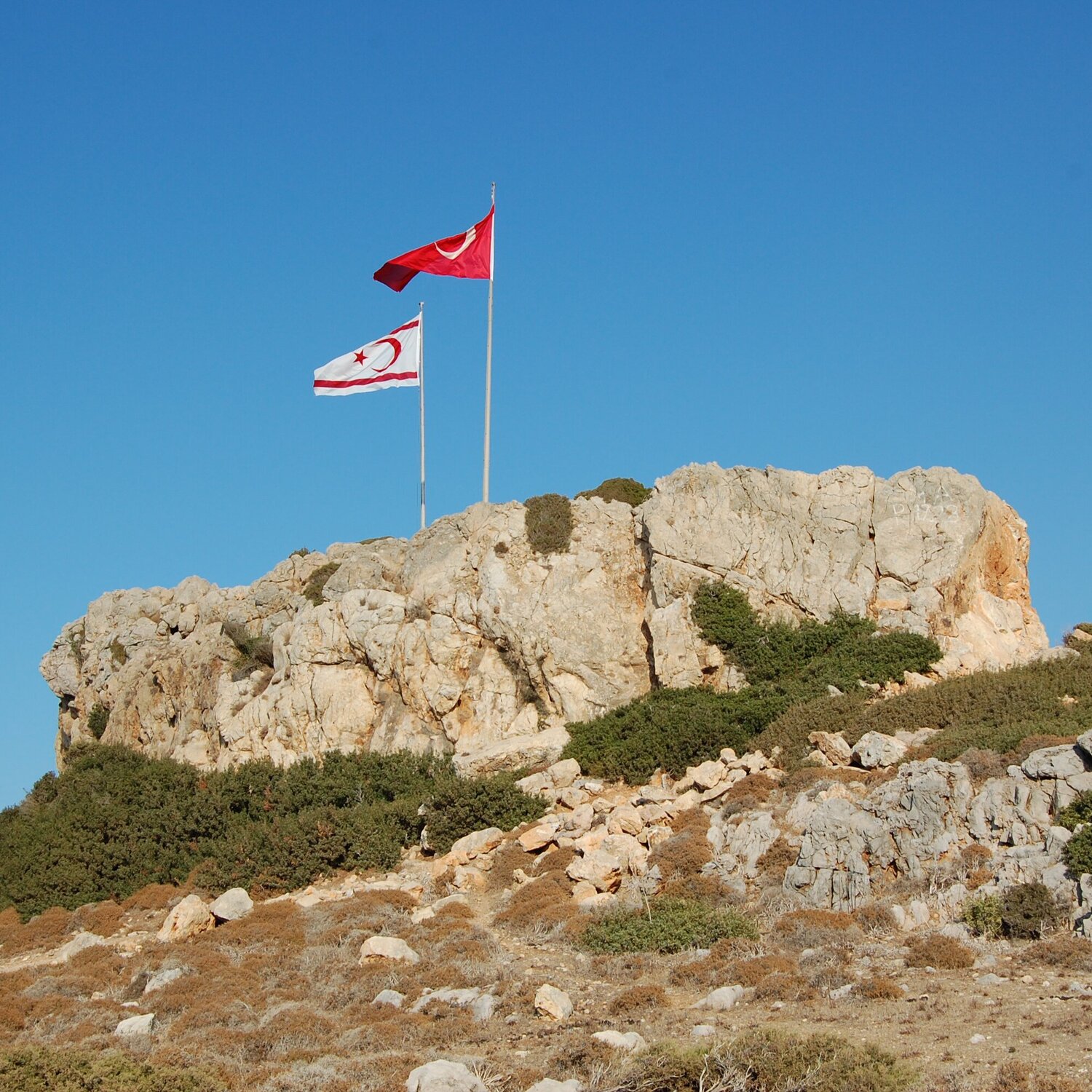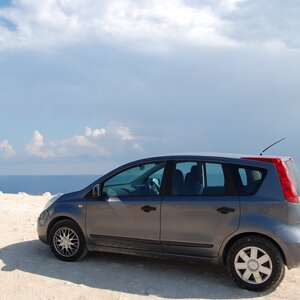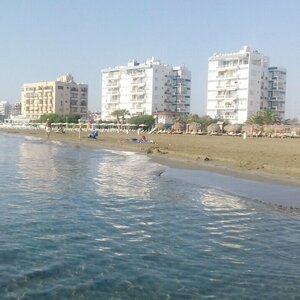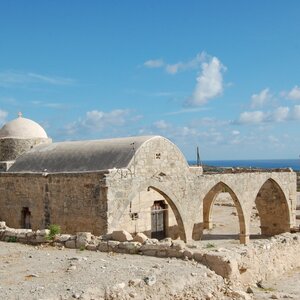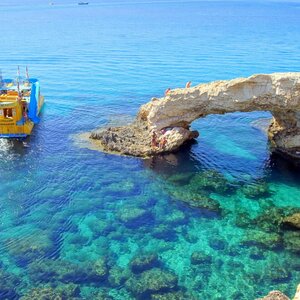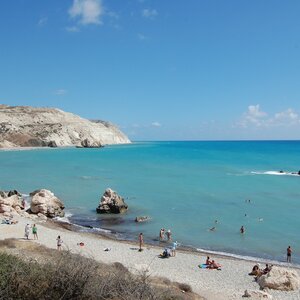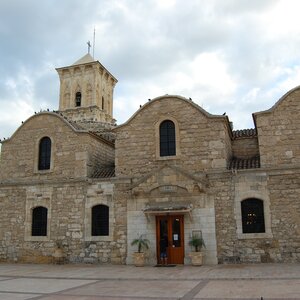I have heard from many acquaintances that they vacation exclusively in Northern Cyprus in the summer. Once they came once, they went every year. They usually explain it by the fact that Northern Cyprus is not as crowded as Southern Cyprus, the vacation here is more relaxed, measured and budget-friendly. I went, and now I know that this is not the only reason, because there are just as many interesting sights in the northern part of the island as in the southern part.
The Turkish lira (TRY) is the most popular currency in Northern Cyprus: 1 lira is worth approximately 14 euro cents.
Useful sites for trip preparation: here and here
Nicosia (Λευκωσία)
Nicosia is the capital of both Northern and Southern Cyprus, and the only city in the world with this status — what better reason to visit? The northerners call it Lefkoşa. The town is divided into two parts by a stone wall and the border crossing is controlled by Turkish border guards and UN troops.
Not to be missed in the Turkish part of Nicosia:
- The Venetian Column in Ataturk Square — it is famous for its base with the coats of arms of the noble Venetian families who lived in Cyprus.
- The former Roman Catholic St. Sophia Cathedral (1209 — 1325), rebuilt into the Selimiye Mosque after the Ottoman takeover of Cyprus, is one of the few mosques in the Gothic style.
- Turkish baths Bayuk-hamam — the building was built in 1571 on the site of an old church, of which the entrance arch is still there. The baths are still in operation for their intended purpose.
- The Bayuk Khan Turkish inn (1572) — now an art center with several galleries, workshops, cafes and stores — and one of the most beautiful buildings in Cyprus.
- The Church of St. Nicholas (Bedesten) is a very old church, built in the 6th century and later reconstructed into a large church. It houses medieval tombstones brought from all over Cyprus.
Famagusta (Greek: Αμμμόχωστος, Turkish: Gazimağusa)
If you travel to Northern Cyprus from Protaras (Πρωταράς) or Ayia Napa (Αγία Νάπα), you will probably cross the border near Famagusta, once the most fashionable resort in the Mediterranean. Things have changed since the annexation of Northern Cyprus and Famagusta is no longer the same. Nevertheless, it’s worth the trip, and here’s why.
The ghost town of Varosha (gr. Βαρώσια, tur. Maraş)
Varosha was once the most fashionable quarter of Famagusta. In the 60-70s. In the 60’s and 70’s of the XX century, the neighborhood was rapidly developing: new high-rise buildings were being built, world stars were vacationing in expensive hotels, nightlife was booming in local bars and clubs, and no one even imagined that it could be otherwise. And then August 1974 happened, and Varosha was evacuated within a few hours and then surrounded by a barbed wire fence, the perimeter of which is still surrounded by towers with armed guards.
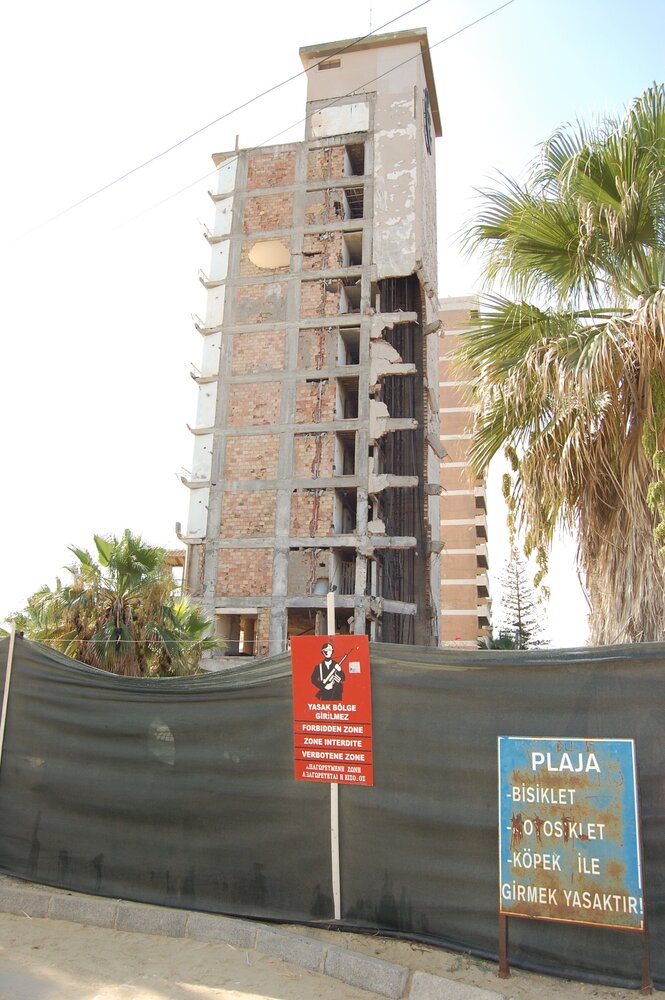
The quarter is gradually being destroyed, because it is impossible to get into Varosha, and they are vigilant about it — according to the UN resolution of 1984, only former locals can settle here. Even if you try to take a picture of the abandoned buildings, you will be reprimanded. Nevertheless, it is quite possible to see them, because the public beach of Famagusta is in close proximity, and many tourists come here not so much to swim and sunbathe, but to see this unprecedented example of what armed conflicts can lead to.
In 2004, Greek Cypriots tried to retake Varosha (Kofi Annan’s plan), but the plan failed.
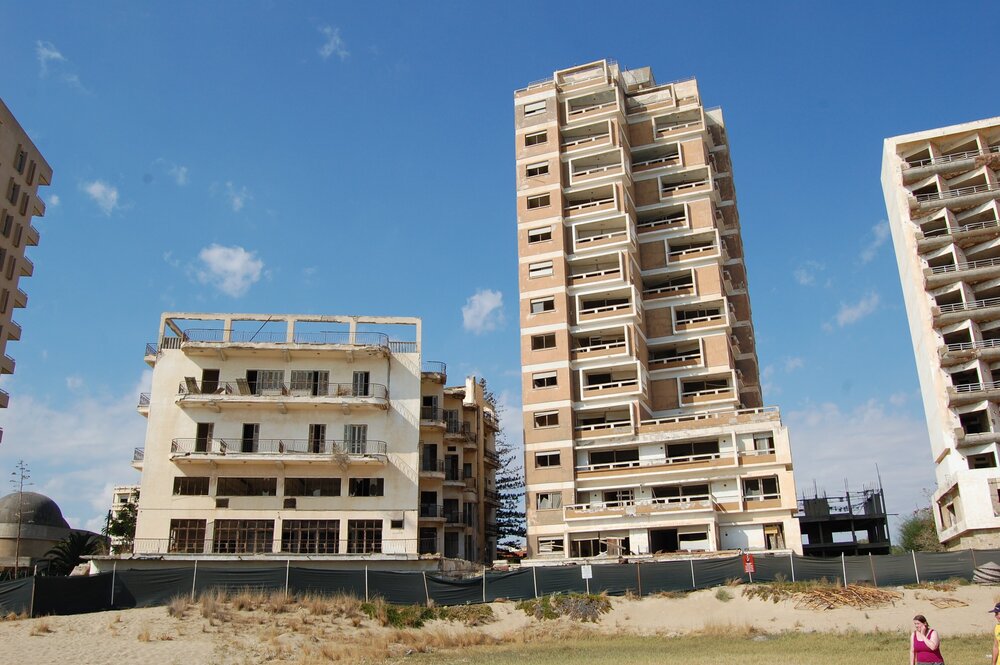
St. Nicholas Cathedral
It is also the mosque of Lala Mustafa Pasha. After the siege of Famagusta by the Turks in the 16th century, the Gothic cathedral, built on the model of Reims Cathedral in France, was renamed a mosque — it is still functioning today. The cathedral is considered to be the most beautiful building in Famagusta, so I definitely advise you to take a look here. Its external appearance is practically unchanged, but the interior decoration was completely changed by the Turks. Nevertheless, the ancient burial place of the bishop of Famagusta remains in the cathedral-mosque. In the courtyard grows a very old ficus, which was planted during the construction — now it is more than 700 years old.
Entrance to the cathedral-mosque is free of charge, and the mode of operation depends on the services. The best time to visit is in the morning. The hardest time to get here is on Friday — take this into account when planning your trip. When entering, it is obligatory to take off your shoes, and women should have their head, shoulders and knees covered.
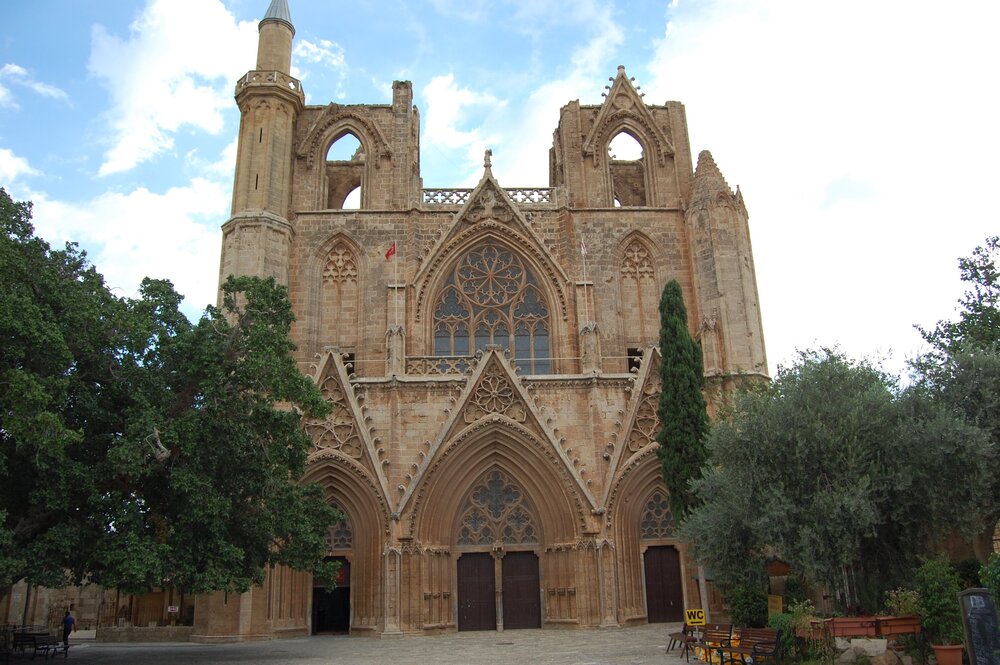
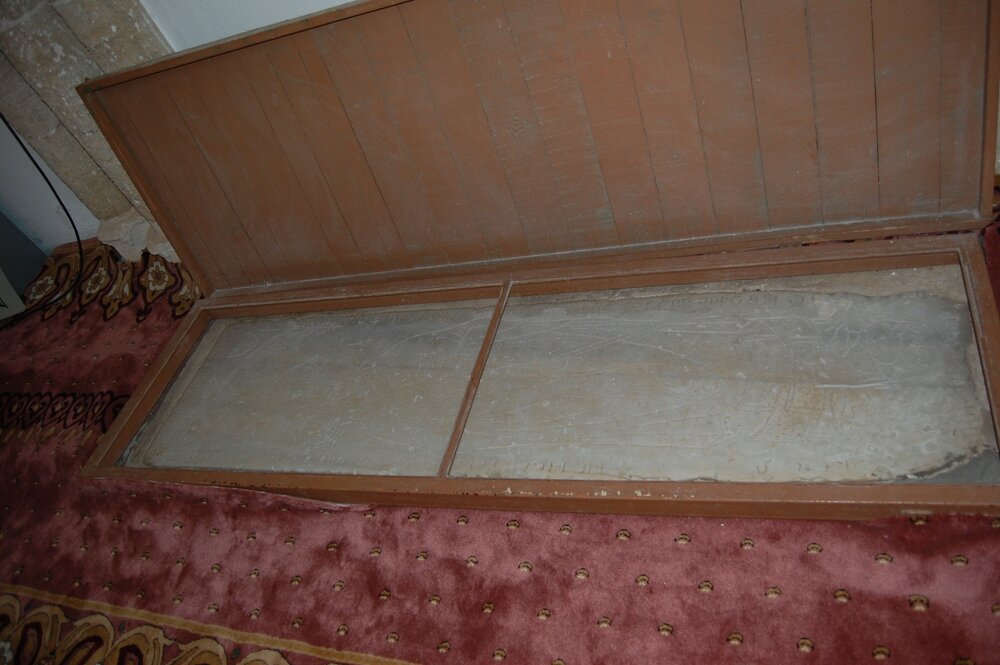
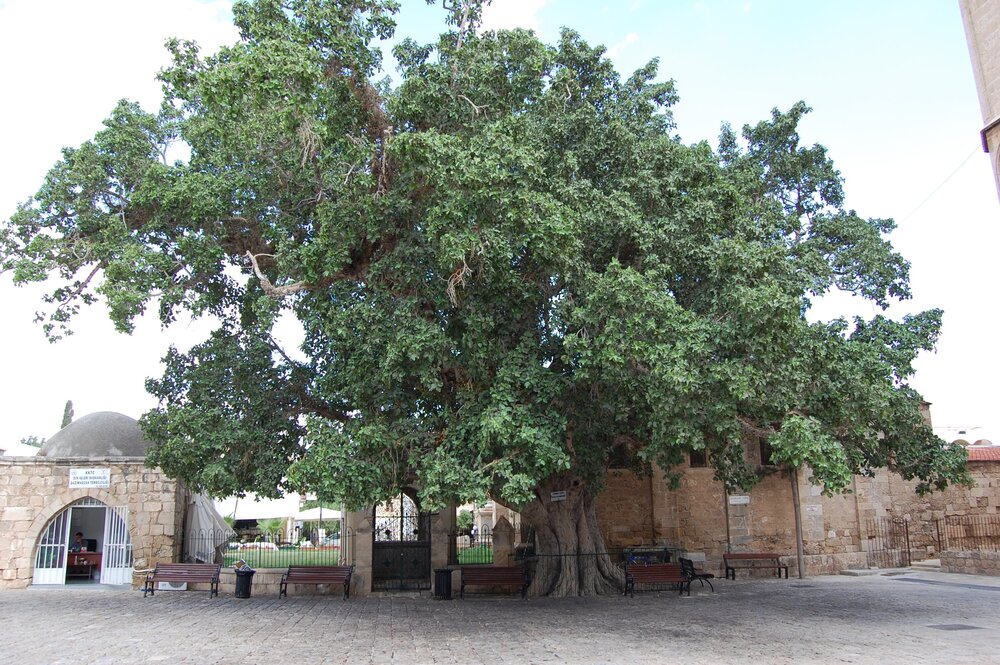
Castello Fortress and Othello’s Tower
Castello’s fortress walls, built in the 14th century by the Venetians, offer stunning views of the Old Town and Famagusta’s seaport — until 1974, it was home to wealthy cruise liners. The citadel is a structure of four towers connected by fortress walls.
One of them is Othello’s Tower, which got its modern name during the British colonial rule of Cyprus. It is believed that the characters in Shakespeare’s tragedy had prototypes in real life, and the story itself took place here. There are different versions regarding the identity of the protagonist. According to one of them, it was a Venetian commandant of Cyprus, whose young wife died under very mysterious circumstances. Another version says that it was the governor of Cyprus, Lieutenant Christoforo Moro. But in any case, Cypriots are very proud that young Desdemona was strangled here and proudly show tourists Othello’s castle.
The fortress is not only a grandiose defense structure, but also a beautiful architectural monument that conveys the spirit of its time. I highly recommend visiting it.
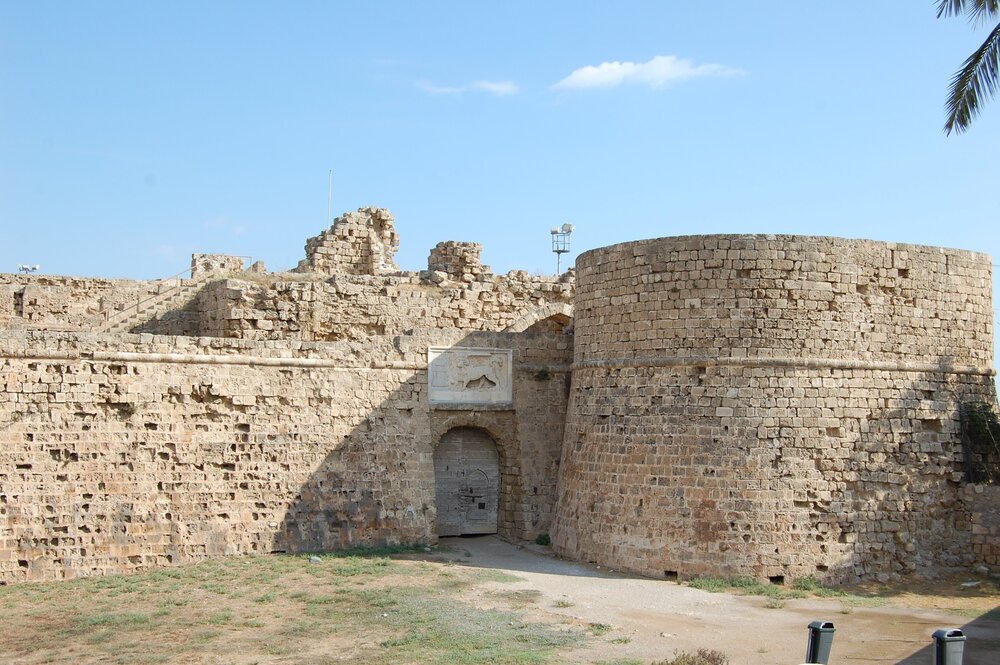
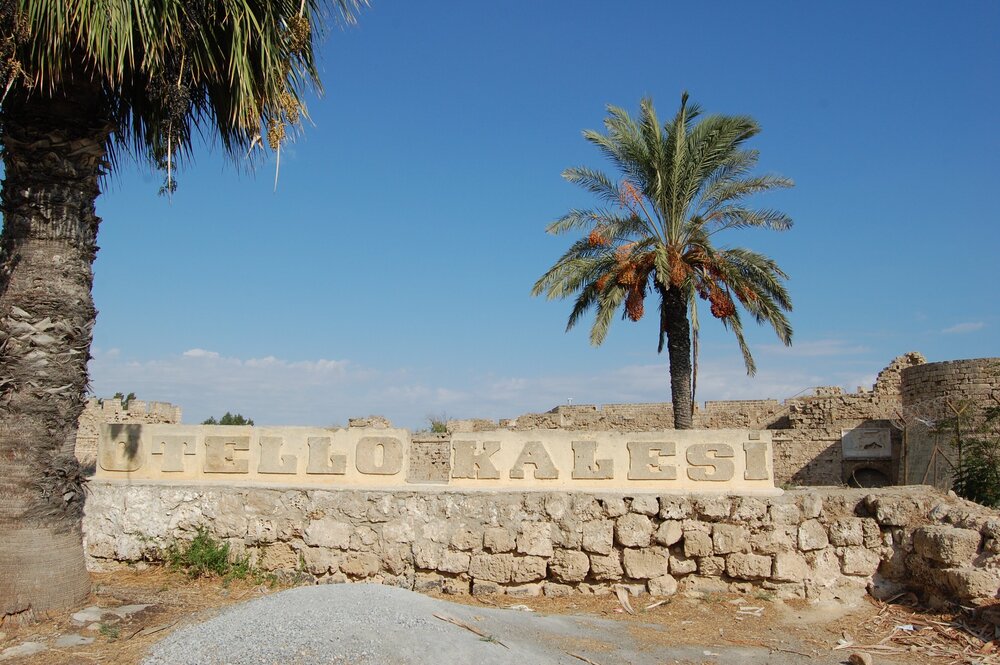
Antique Salamis (Salamis, Gr. Σαλαμίς)
It was the largest ancient city of Cyprus, of which now remains very picturesque ruins 6 km from Famagusta. The excavations of Salamina have not yet been completed, but there is still a lot of interesting things to see there.
The most grandiose monument is the Roman Gymnasium, which can be seen on the approach to Salamis. The marble colonnade of the gymnasium is one of the hallmarks of Cyprus. The first building was constructed in the Hellenistic period, and during the restoration in the I century AD, public baths — thermae were added to it, which have also been partially preserved. The marble statues of gods and heroes that once adorned the baths are now placed on pedestals.
Here is also one of the largest surviving ancient theaters in the Eastern Mediterranean — it had a capacity of 15 thousand spectators and consisted of 50 rows.
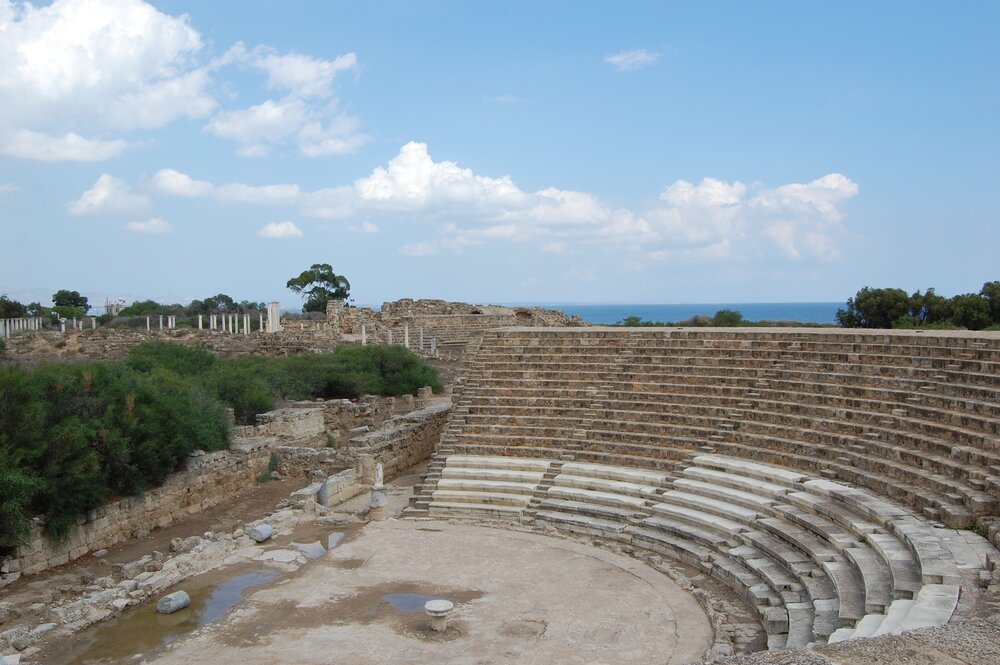
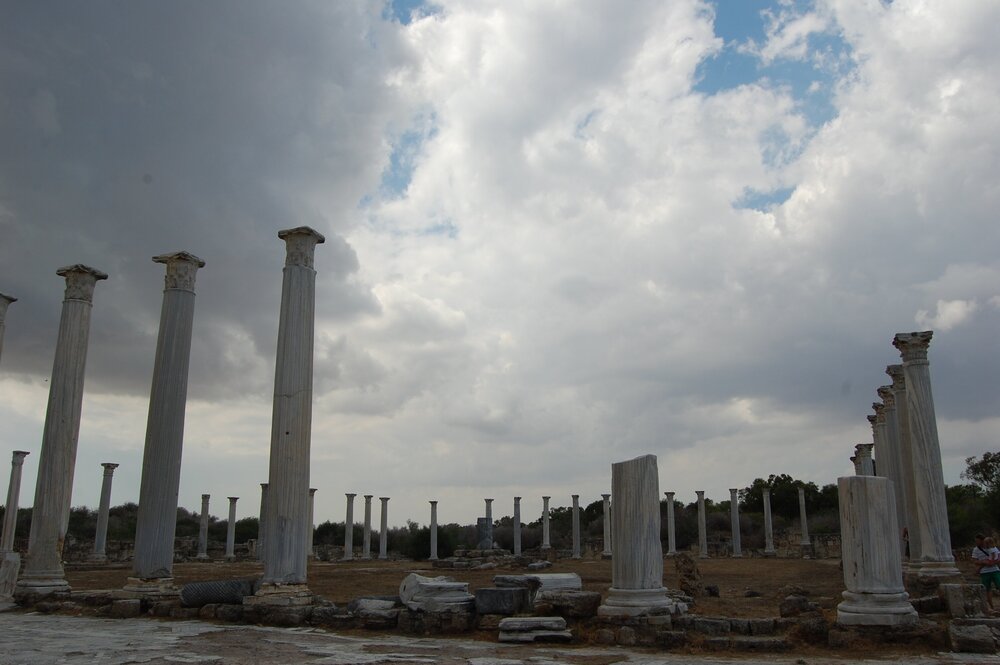
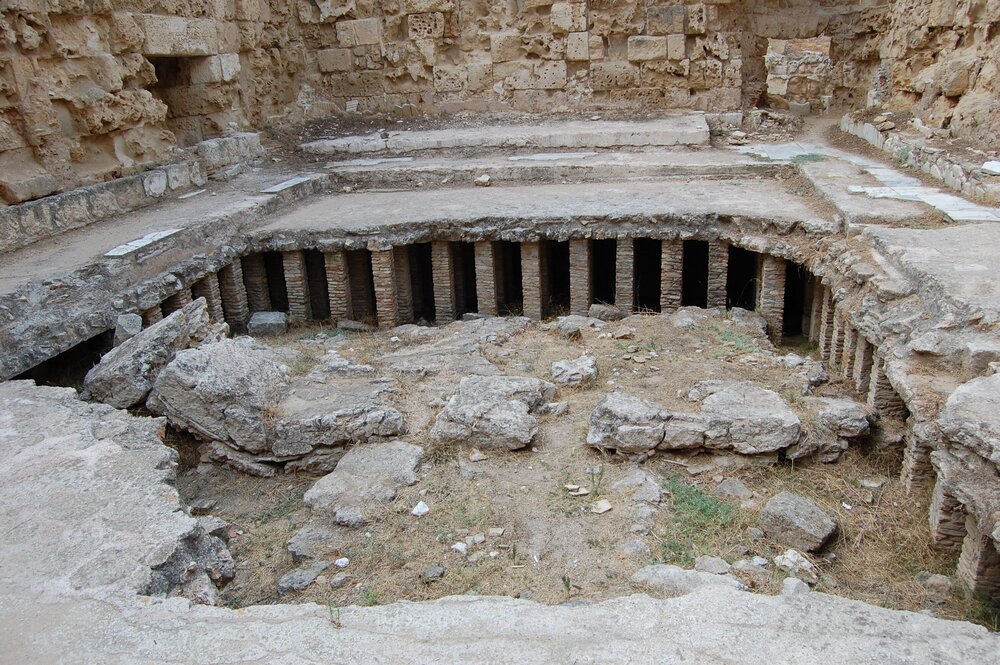
The other structures of Salamina are worse preserved:
- The Agora is a marketplace of which fragments of columns remain;
- Temple of Zeus, of which only 2 stones remind us;
- The Forum is the center of the city. The granite columns brought from Egypt remain;
- Necropolis — royal tombs. There is a small museum on its territory;
- Church of St. Epiphanius, who was supposedly buried in the now empty tomb located here;
- Campanopetra, an early Christian church of the 4th century, partially excavated.
Kyrenia (Κερύνεια)
Kyrenia, or Girne as the Turks call it, is an ancient port town on the northern coast of Cyprus. Now it is the largest tourist center with all the relevant infrastructure: hotels, water parks, bars, nightclubs and stores.
Tourists usually come here to visit the Kyrenia Fortress and its shipwreck museum with the famous remains of an ancient ship from the time of Alexander the Great, discovered near the coast of Kyrenia in the 1970s.
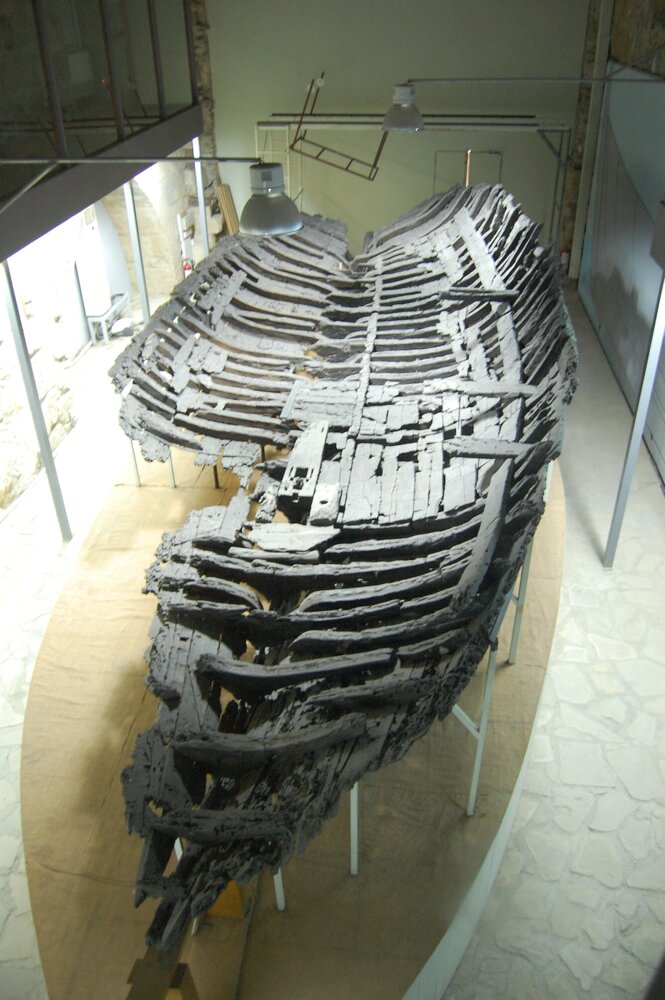
The Kyrenia Fortress is perfectly preserved despite its impressive age. If you are a lover of hiking, history, photography and beautiful views, this is definitely the place for you. It will take you at least an hour and a half to see the fortress.
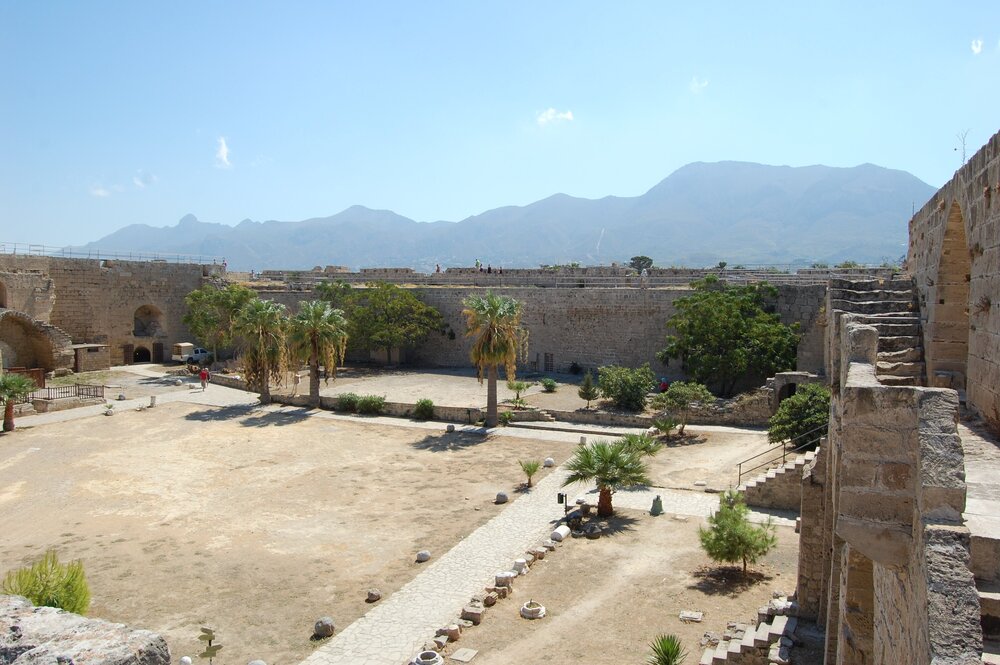
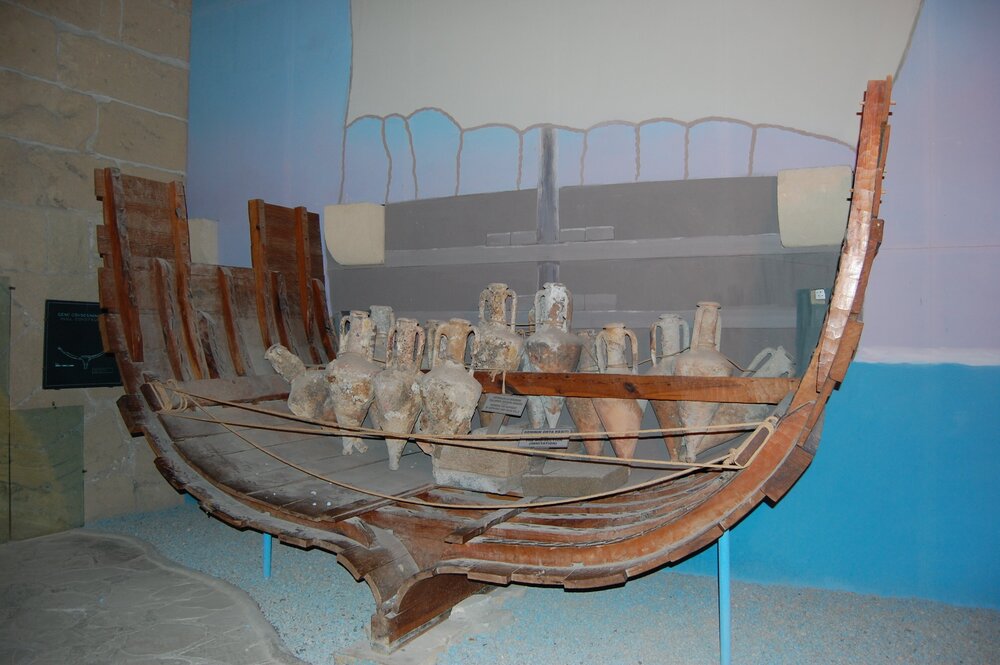
St. Hilarion’s Fortress
This is a place for fans of the Middle Ages. The history of the fortress began when the elder Hilarion, a preacher of Christianity, settled here in the 6th century AD. After his death he was recognized as a saint, and a monastery was built in his memory. Then came an observation post with four towers, which later became a large fortress that protected the people of Cyprus from Arab raids.
The castle consisted of several autonomous levels, which made it very difficult for enemies to conquer it. On the lower tiers there were stables, outbuildings, warehouses, where servants and soldiers lived. On the upper tiers lived the royal family. The castle could withstand a siege of several years thanks to its large water and food reserves.
There are installations depicting the life of the royal family and entourage, and the castle has a viewing platform on its summit, offering magnificent views. There is a small café and a souvenir store on site.
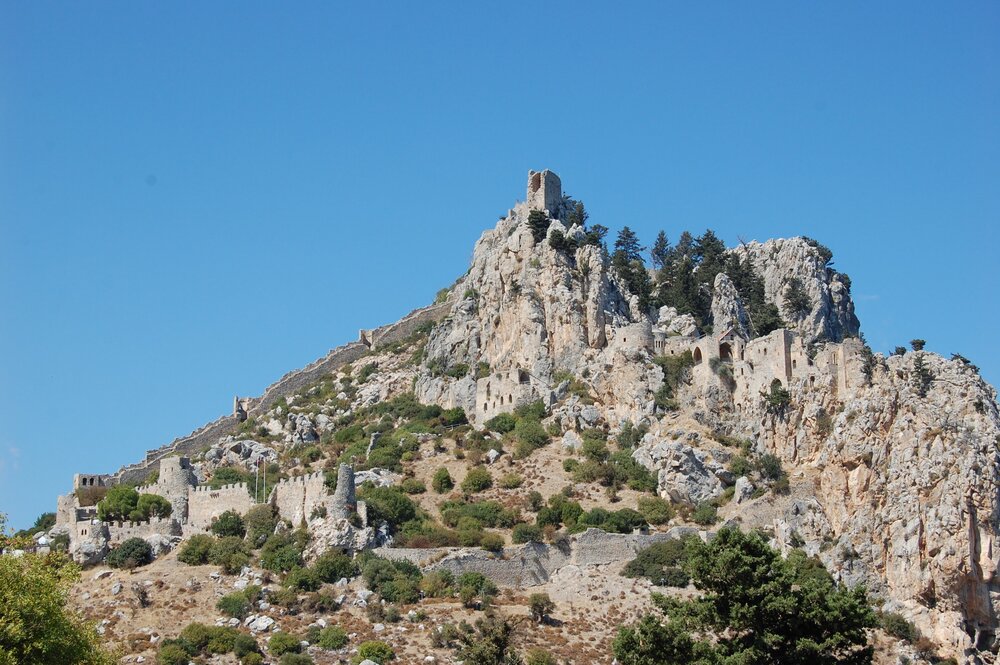
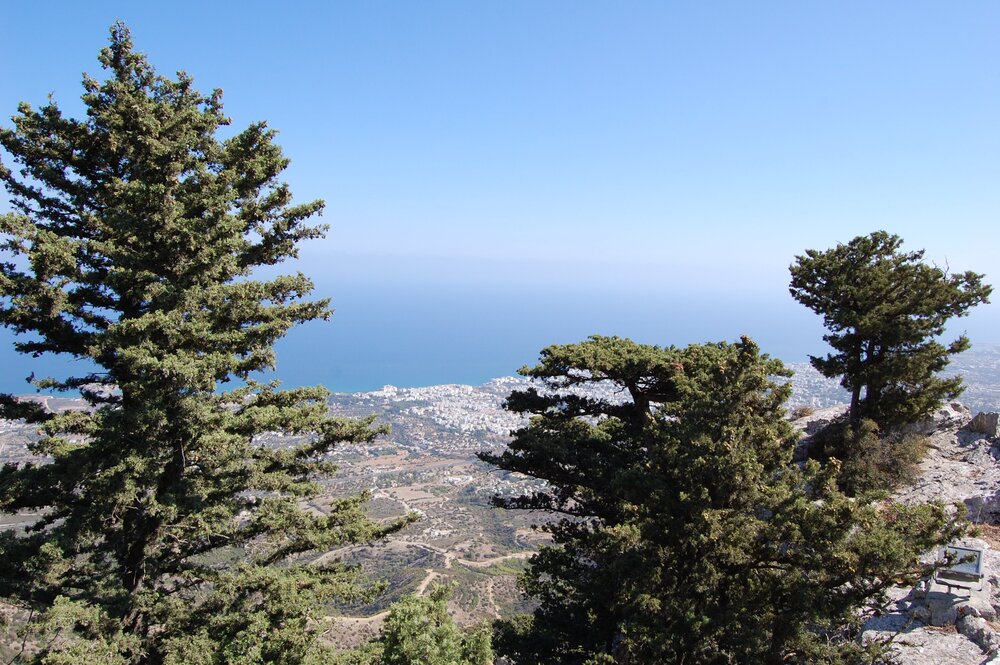
To visit St. Hilarion Castle, I recommend wearing comfortable athletic shoes, bring a hat, sunscreen and water. Parking is free of charge.
Open daily from 8 a.m. to 6:30 p.m. April through October and until 3:30 p.m. in low season. The ticket office closes one hour before closing time.
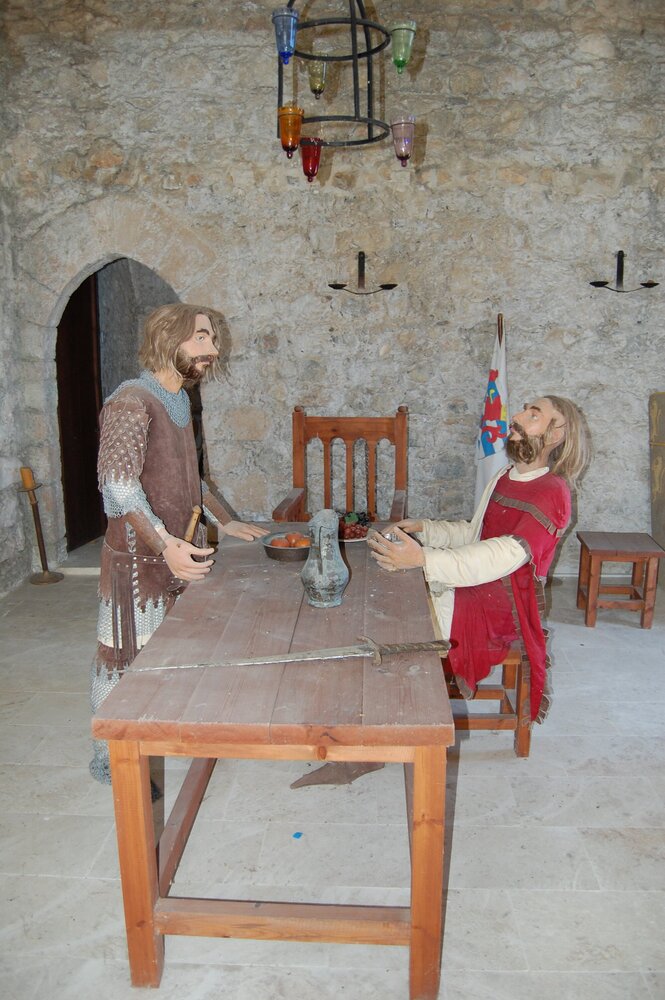
Cape Andreas (gr. Ακρωτήριο Αποστόλου Ανδρέα, tur. Zafer Burnu)
Cape Andreas is the northeasternmost point of the island, on the edge of the Karpasa Peninsula. This place is named in honor of St. Andrew. Not far away is the Orthodox Monastery of St. Andrew the Apostle, a UNESCO World Heritage Site, which has been a museum since the annexation of the northern part of the island.
This is the wild part of the island with mesmerizing seascapes. There are few tourists — not everyone comes here. But on the way to Cape Andreas you will meet many donkeys — bring carrots or apples for them. Donkeys often walk in groups and act in an organized manner: some block the road, others come up to the car and unambiguously look through the windows.
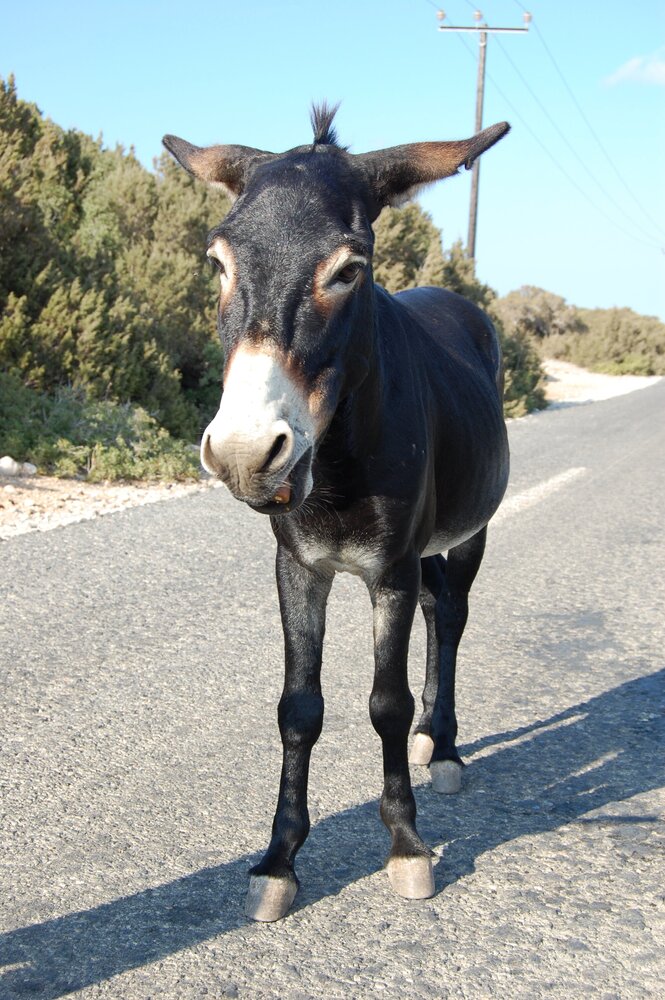
I advise you to climb the hill with flags — from here you can enjoy a fantastic panoramic view of the endless sea, cliffs and the green peninsula of Karpasa. Unforgettable impressions and great photos are guaranteed!
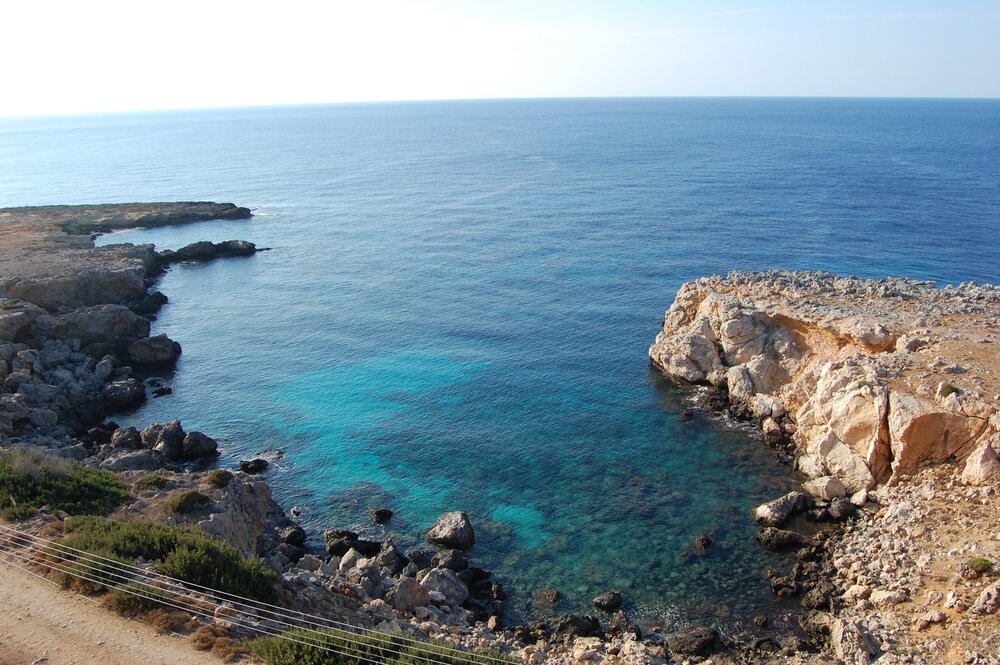
The Monastery of St. Andrew the Apostle is located about 4 km from the tip of the cape and will definitely meet you on your way. It is more than 1000 years old, although the modern building was built not so long ago — in the XIX century. But partially preserved building of the XV century in the Gothic style. To see it, you need to go down the stone-carved stairs.
An old icon of St. Andrew is kept in the church, and next to it there is a spring, which, according to legend, was discovered by the apostle himself.
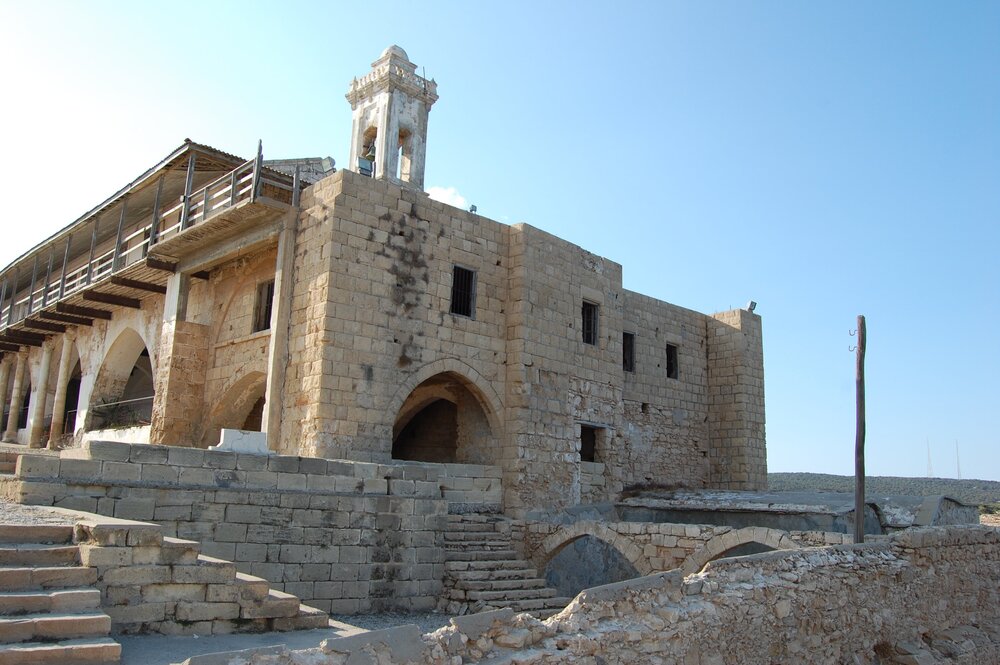
You can hardly say you have seen Cyprus if you have not been to the Turkish part of the island. The 1974 conflict, which had tragic consequences for the local population, created two completely different territories, each with its own peculiarities.

